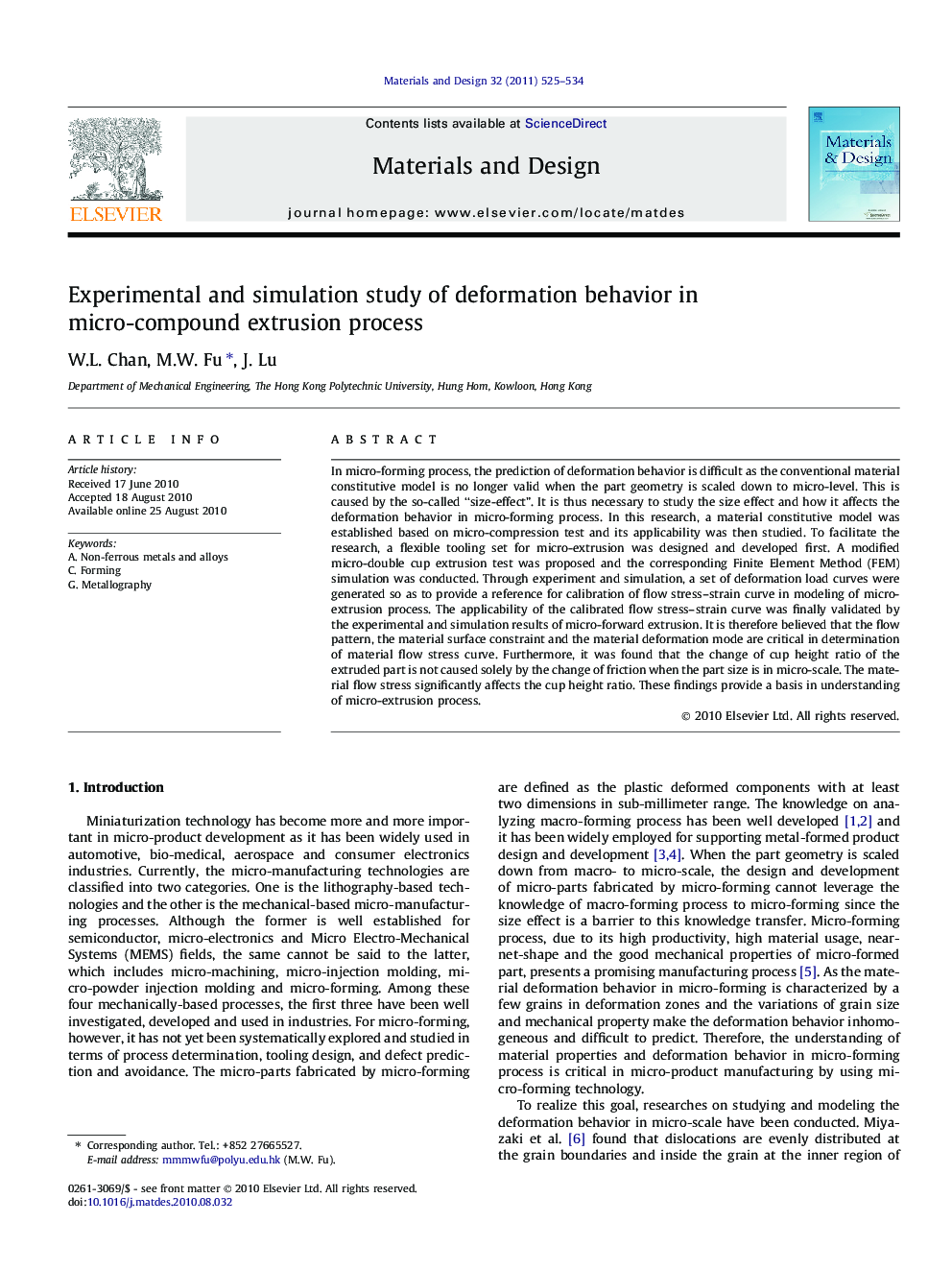| Article ID | Journal | Published Year | Pages | File Type |
|---|---|---|---|---|
| 831550 | Materials & Design (1980-2015) | 2011 | 10 Pages |
In micro-forming process, the prediction of deformation behavior is difficult as the conventional material constitutive model is no longer valid when the part geometry is scaled down to micro-level. This is caused by the so-called “size-effect”. It is thus necessary to study the size effect and how it affects the deformation behavior in micro-forming process. In this research, a material constitutive model was established based on micro-compression test and its applicability was then studied. To facilitate the research, a flexible tooling set for micro-extrusion was designed and developed first. A modified micro-double cup extrusion test was proposed and the corresponding Finite Element Method (FEM) simulation was conducted. Through experiment and simulation, a set of deformation load curves were generated so as to provide a reference for calibration of flow stress–strain curve in modeling of micro-extrusion process. The applicability of the calibrated flow stress–strain curve was finally validated by the experimental and simulation results of micro-forward extrusion. It is therefore believed that the flow pattern, the material surface constraint and the material deformation mode are critical in determination of material flow stress curve. Furthermore, it was found that the change of cup height ratio of the extruded part is not caused solely by the change of friction when the part size is in micro-scale. The material flow stress significantly affects the cup height ratio. These findings provide a basis in understanding of micro-extrusion process.
